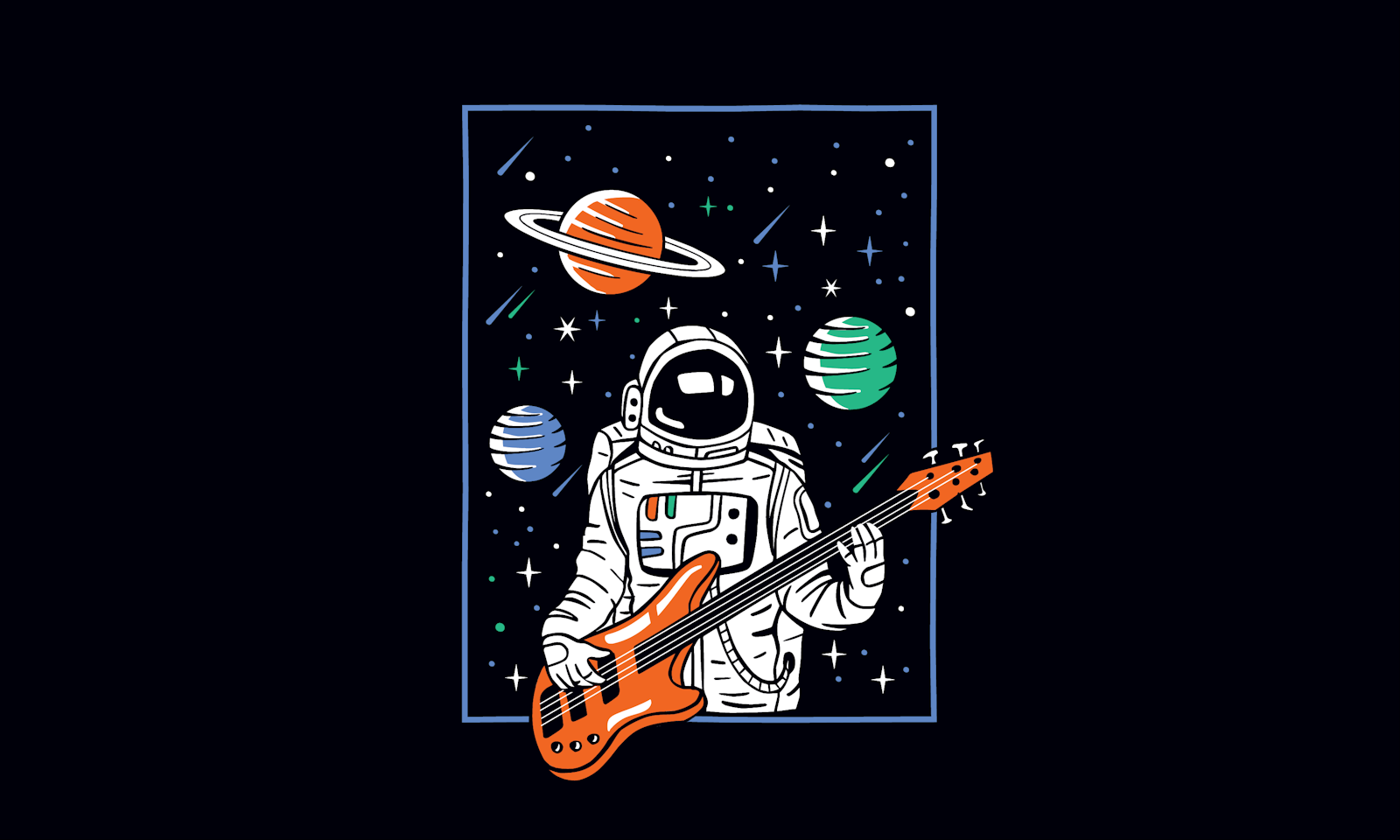With enough determination, people can turn almost anything into a musical instrument: a blade of grass, an array of water glasses, a field of flowing sand dunes in Abu Dhabi, or a 3.5-acre system of stalactites dangling from the ceiling of Virginia’s Luray Caverns. But why stop there? Evan Anders, a fluid dynamics researcher at Northwestern University, and his colleagues just transformed an entire star into a musical instrument.
The researchers’ formal goal was to vibrate a star and listen to the response, as a way to study its inner workings. Lacking godlike powers, Anders and company could not conjure an actual, physical star for their sonic explorations. They had to make do with a three-dimensional model of a giant ball of gas and plasma, 15 times as hefty as the sun, and pump simulated waves through its layers. Then they indulged in a dose of whimsy, using their stellar instrument to crank out some celestial tunes: a passage from Gustav Holst’s The Planets and (natch) a snippet of “Twinkle Twinkle Little Star.”
“Dynamically, we want to know what’s happening inside massive stars,” Anders says, because they exert a tremendous influence on everything around them. When such stars are young, they shine hot and blue, like the members of the Pleiades. As they age, they become even more intense. Bright Rigel and Betelgeuse in Orion are prominent examples. Then things get really interesting. High-mass stars die in colossal supernova explosions that seed interstellar space with heavy elements. The oxygen in Earth’s air and the silicon in the ground originated in these stars. Without them, you literally would not be here.
Stars are musical, ringing nonstop in response to the fusion energy pouring out of their cores.
The dramatic life and death of a massive star is controlled by events deep in its core. That’s where fusion reactions synthesize new elements and keep the energy flowing—until the reactions fail, the outer parts of the star blow to bits, and the inner part collapses into a neutron star or a newly minted black hole. Outward appearances reveal only a little about what’s going on. To get the full story, you need to explore far beneath the surface. Sound turns out to be an excellent tool for doing just that.
Astronomers have discovered that stars are highly musical, ringing nonstop in response to the fusion energy pouring out of their cores. When all those good vibrations wriggle to the top, they make the star flicker slightly, by about one part in 1,000. That innate “twinkling” provides outward evidence of the processes generating the waves hundreds of thousands of miles below: sound translated into light.
The challenge for Anders and his team is that stars play many tunes all at once. Within all that noise, they wanted to pick out one specific tone, the rumbling of convection in the core. Waves from the core could reveal crucial information about the processes that cause massive stars to blaze and, eventually, to self-destruct. So Anders and his colleagues fired up their computers, strummed the cores of their virtual stars, and listened carefully for that single, telltale sound. “It’s like we put our star in a recording booth and measured the waves coming out of the center,” he says.
The resulting jam session, recently published in Nature Astronomy, offers a remarkable cross-section examination of a giant star, showing how sound waves travel through regions that we could never observe directly. One frustrating thing that Anders learned in the process is that stars are not well designed for high-fidelity listening. When he played the sound of the core through the star’s overlying layers, he found that the waves got horribly muffled as they travel, “like if you put a band in a crappy bar or some really bad venue,” he says.
By the time the waves from the core reach the surface, Anders determined, they are so feeble that they cause the star’s brightness to vary by just one part in 1 million. Today’s telescopes aren’t accurate enough to pick out that one wave pattern from the cacophony of other sounds that stars generate; we can’t eavesdrop on stellar cores just yet. But now we know what to look for with tomorrow’s telescopes.
Anders and his team also created a wonderfully detailed model of how sound waves travel through a star. That model could be useful to other researchers—or, in principle, it could allow anyone to play music through a star. Maybe their stellar instrument could become an online app, I suggest. “That’s actually a really good idea,” Anders laughs.
The acoustics might be terrible, but who could resist hearing Prince’s “Baby I’m a Star” or Pitbull’s “Fireball” on the largest (yet) soundstage in the universe? ![]()
Lead image: cddesign.co / Shutterstock




























